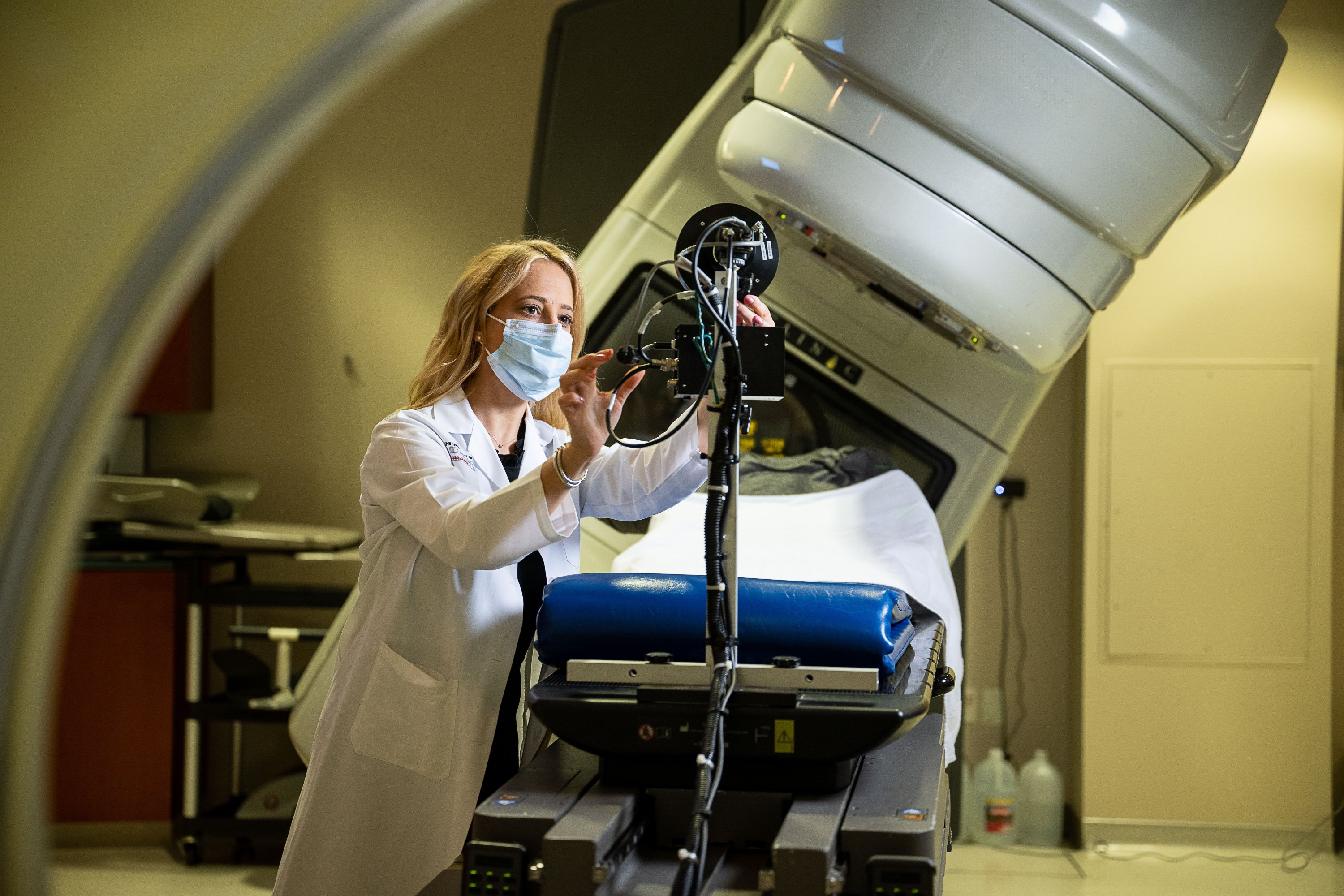- Diseases
- Acoustic Neuroma (16)
- Adrenal Gland Tumor (24)
- Anal Cancer (70)
- Anemia (2)
- Appendix Cancer (18)
- Bile Duct Cancer (26)
- Bladder Cancer (74)
- Brain Metastases (28)
- Brain Tumor (234)
- Breast Cancer (728)
- Breast Implant-Associated Anaplastic Large Cell Lymphoma (2)
- Cancer of Unknown Primary (4)
- Carcinoid Tumor (8)
- Cervical Cancer (164)
- Colon Cancer (168)
- Colorectal Cancer (118)
- Endocrine Tumor (4)
- Esophageal Cancer (44)
- Eye Cancer (36)
- Fallopian Tube Cancer (8)
- Germ Cell Tumor (4)
- Gestational Trophoblastic Disease (2)
- Head and Neck Cancer (14)
- Kidney Cancer (130)
- Leukemia (342)
- Liver Cancer (50)
- Lung Cancer (286)
- Lymphoma (278)
- Mesothelioma (14)
- Metastasis (30)
- Multiple Myeloma (100)
- Myelodysplastic Syndrome (60)
- Myeloproliferative Neoplasm (6)
- Neuroendocrine Tumors (16)
- Oral Cancer (102)
- Ovarian Cancer (178)
- Pancreatic Cancer (162)
- Parathyroid Disease (2)
- Penile Cancer (14)
- Pituitary Tumor (6)
- Prostate Cancer (150)
- Rectal Cancer (58)
- Renal Medullary Carcinoma (6)
- Salivary Gland Cancer (14)
- Sarcoma (238)
- Skin Cancer (302)
- Skull Base Tumors (56)
- Spinal Tumor (12)
- Stomach Cancer (66)
- Testicular Cancer (28)
- Throat Cancer (92)
- Thymoma (6)
- Thyroid Cancer (100)
- Tonsil Cancer (30)
- Uterine Cancer (86)
- Vaginal Cancer (18)
- Vulvar Cancer (22)
- Cancer Topic
- Adolescent and Young Adult Cancer Issues (22)
- Advance Care Planning (12)
- Biostatistics (2)
- Blood Donation (18)
- Bone Health (8)
- COVID-19 (360)
- Cancer Recurrence (120)
- Childhood Cancer Issues (120)
- Clinical Trials (628)
- Complementary Integrative Medicine (22)
- Cytogenetics (2)
- DNA Methylation (4)
- Diagnosis (240)
- Epigenetics (6)
- Fertility (62)
- Follow-up Guidelines (2)
- Health Disparities (14)
- Hereditary Cancer Syndromes (128)
- Immunology (18)
- Li-Fraumeni Syndrome (8)
- Mental Health (122)
- Molecular Diagnostics (8)
- Pain Management (62)
- Palliative Care (8)
- Pathology (10)
- Physical Therapy (18)
- Pregnancy (18)
- Prevention (940)
- Research (390)
- Second Opinion (78)
- Sexuality (16)
- Side Effects (616)
- Sleep Disorders (10)
- Stem Cell Transplantation Cellular Therapy (216)
- Support (408)
- Survivorship (330)
- Symptoms (182)
- Treatment (1794)
Occupational therapy for cancer patients: What is it, and who needs it?
BY Lisa Garcia
4 minute read | Published May 20, 2022
Medically Reviewed | Last reviewed by an MD Anderson Cancer Center medical professional on May 20, 2022
Cancer and its treatments, such as chemotherapy and surgery, can sometimes affect a patient’s physical and cognitive functions. This can affect daily tasks, like getting dressed, and hobbies, like gardening or fishing.
Occupational therapy plays a pivotal role in helping patients overcome such challenges. To learn more about this type of therapy, we spoke with occupational therapist Sydney Ewing, who specializes in treating patients with orthopaedic cancers.
What is occupational therapy?
Occupational therapy helps patients who have a change in mental or physical function regain skills for everyday activities, whether that’s high-level tasks or basic functions. For example, we can help patients with basic tasks like getting dressed on their own or high-level ones like caring for their children. We come up with creative ideas to help patients and offer support. We use a lot of adaptive equipment to help patients overcome a deficit or do task analysis where you break down the task – usually just a specific piece of it – and modify it and provide a level of assistance. It’s a lot of thinking out of the box, and a lot of trial and error.
What is the difference between occupational therapy and physical therapy?
Occupational therapy is rehabilitation to return to daily activities all the way up to your leisure interests. Physical therapy focuses more on specific mobility and transfer training, as well as strength and endurance and range of motion.
Both occupational therapy and physical therapy are important to nearly every patient to improve their recovery and quality of life. You can’t walk your dog without being able to walk. So, the two therapies go hand in hand, and it’s a collaborative process.
Who needs occupational therapy?
Occupational therapy can benefit so many patients. Occupational therapists can address:
- Daily living activities
- Fatigue management
- Psychosocial barriers to engaging in activities
- Body image
- Sexuality and sexual activity
- Cognitive deficits
- Lymphedema management
- Peripheral neuropathy
- Upper extremity pain and dysfunction
- Fine motor impairments
- Visual impairments
- Community/work reintegration
What can patients expect when they meet with an occupational therapist?
Typically, in their initial evaluation, we get a good overview of the patient. We get an idea of how they were performing prior to needing occupational therapy. The patient and the occupational therapist collaborate to determine what the patient is trying to return to, what they’re trying to achieve, what their deficits are and how we can overcome those deficits. If it’s a specific strength deficit, or they’ve had surgery to an upper extremity, therapy may involve exercises or range of motion. We try to set goals with the patient and come up with different ideas to achieve those goals.
Why is occupational therapy important for patients with cancer?
Occupational therapy has a lot to offer for cancer patients. I help patients overcome chemotherapy- and radiation-related fatigue, as well as recover after surgery. Sometimes cancer patients have mental challenges, and occupational therapy can help keep the patient engaged. Some patients feel like they’ve lost their lives, but occupational therapists can provide support for them by finding ways to keep them engaged mentally.
How do you approach occupational therapy for pediatric cancer patients?
While adult patients are able to better understand their treatment, kids often don’t always understand what’s going on. So, we try to be a little bit more playful and disguise therapy as play with pediatric patients. We’ll target specific areas like balance or strength disguised as play.
Parents are also part of treatment process, so we’re training parents to help their kids with the therapy as well. Kids take a lot of patience, and it’s important to establish trust with them.
How do you plan occupational therapy for patients?
I always come in with an idea and plan for what to work on that day based on goals we came up with in the initial evaluation. The plan depends on how the patient is feeling and what they want to work on. We always come up with a final plan together.
And plans can always change. There is always room to do more, to modify, to come up with a successful plan that works for the patient. We’re always trying to get the patient to the finish line.
How long does occupational therapy typically last?
For patients who’ve undergone surgery, I usually plan their occupational therapy to last for about four weeks after their procedure. We typically work together about five times a week, but the frequency varies depending on the patient’s needs. Sessions last between 30 minutes to an hour. If patients need ongoing occupational therapy services after they’re discharged from the hospital, they can be referred to an outpatient occupational therapist or a home health occupational therapist.
How do you measure a patient’s success with occupational therapy?
I usually measure a patient’s success by their ability to engage in their life, whether they need assistance or can operate independently. Keeping people engaged in their life and their interests takes my help, but it also requires the patient to practice independently outside of our time together. Our goal is to maintain the patient’s quality of life and set them up with tools to do that outside of the hospital.
How do patients at MD Anderson get connected to an occupational therapist?
Patients at MD Anderson can ask their primary physician, physician assistant or nurse practitioner to refer them to our occupational therapy services. This can be done on either an inpatient or outpatient basis.
Request an appointment at MD Anderson online or by calling 1-855-634-0528.

We’re always trying to get the patient to the finish line.
Sydney Ewing
Occupational Therapist





